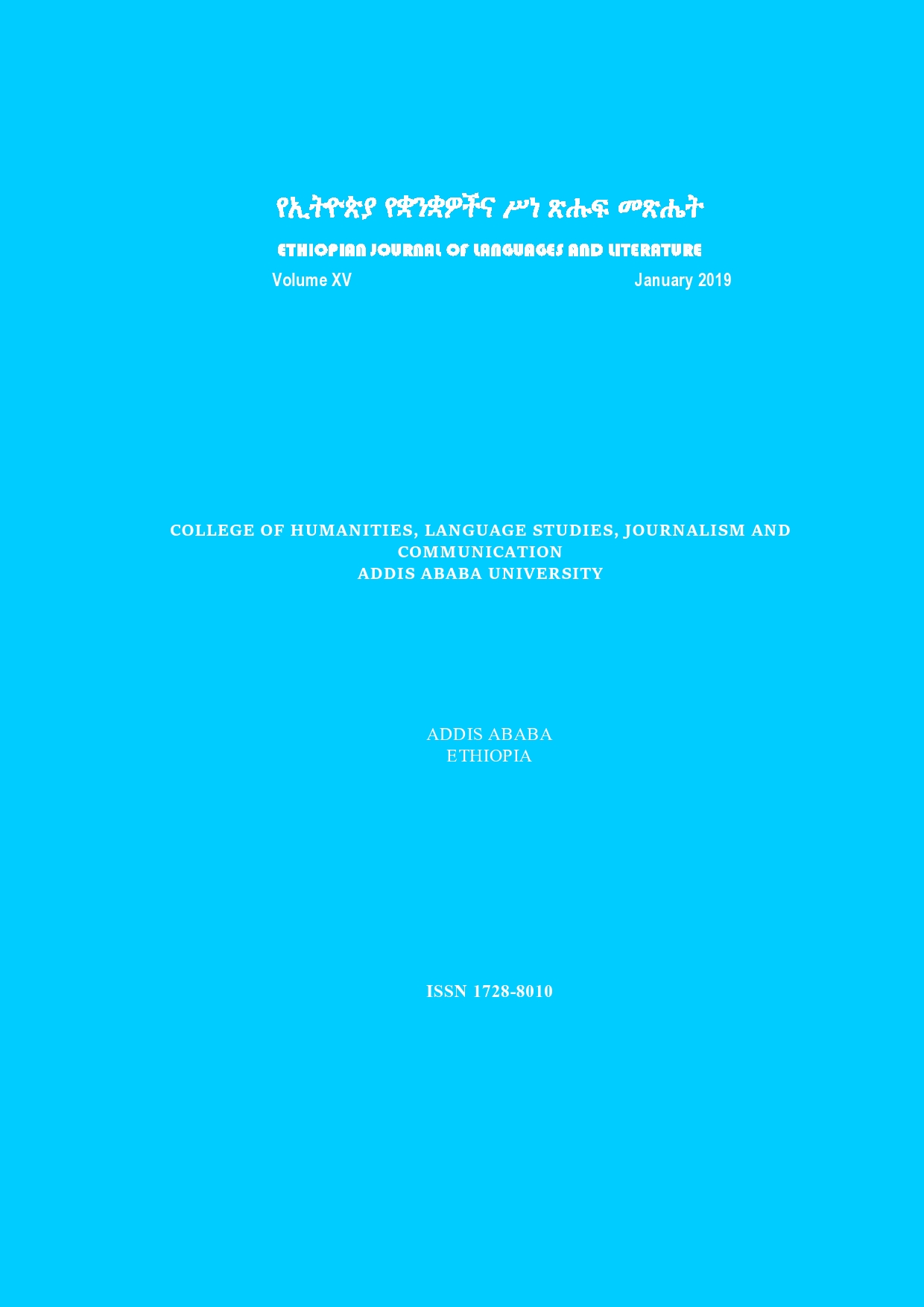Analytic Causatives in Ethiopian Afro-Asiatic: The Case of Afan Oromo, Amharic, Shekkinoonoo and Kafinoonoo
Abstract
This paper presents an overview of analytic causatives of Ethiopian Afro-Asiatic languages. I shall show that, based on main verbs, Ethiopian Afro-Asiatic languages have two types of analytic causatives. One of these analytic causatives employs the inchoative form of the verb ‘to be’ as a matrix verb of the causer event while the other one employs the verb ‘to do’ as the main verb of the causer event of analytic causatives. The inchoative form of the verb ‘to be’ that serves as the main verb of the causer event itself is always a complex verb because the causative morpheme and agreement elements are suffixed to it. The causative morpheme that is attached to such an inchoative form of the verb ‘to be’ can be single or double depending on the language and the number of causers. This means that if a language permits double causative and the number of causers is two in the analytic causative, the causative morpheme that is added to the inchoative verb is two, and so on. But some other Ethiopian Afro-Asiatic languages use only the verb ‘to do’ as a main verb of the causer event. In languages where the verb ‘to do’ is used as a main verb, its form shows variations. In some languages, the verb ‘to do’ is a frozen base (i.e., a deponent or non-existing base) and to be used as a main verb of the analytic causative structure, it must get the causative morpheme attached to it. The causative morpheme that is attached to such a frozen base can be single or double. In some other languages the verb ‘to do’ is an already existing verb and it can be used as a main verb of the analytic causative structure as is or as a complex verb form since it can add one or two causative morphemes. Moreover, the paper discusses analytic causatives based on oppositions of causative and non-causative members. Particularly, the paper investigates the verb ‘to be’ and the verb ‘to do’ as correlational opposites to serve as the basis for analytic causative. Moreover, the paper considers some ideophones and analytic causatives as oppositions of causative and non-causative members. I also show that analytic causatives have strict word order; the subject of the main sentence precedes the subject of the embedded sentence while the verb of the main sentence follows the verb of the embedded sentence. The paper also considers structures of analytic causatives in terms of grammatical function changes.
